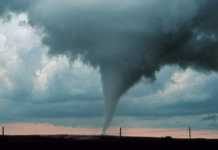Many will be familiar with El Niño – the ocean-warming phenomenon that produces warmer global temperature and wild weather patterns – but how about La Niña, which is linked to cooler sea surface temperatures, cooler global temperatures, and drier, colder weather?
According to a press release by the World Meteorological Organization (WMO), La Niña is back in the central and eastern equatorial Pacific Ocean, after nearly a decade’s absence.
What is most significant is that this cooling event is expected to result in sea surface temperatures between two and three degrees Celsius cooler than average, said Dr. Maxx Dilley, Deputy Director in charge of Climate Services Department at WMO.
According to Dilley, “These coolings of these large ocean areas have a significant effect on the circulation of the atmosphere that’s flowing over them. And the changes in the atmosphere in turn affect precipitation patterns around the world.”
Why is this important? Because when there is an El Niño event, such as we experienced in 1998 and again in 2016, record warm global temperatures were set, which were immediately attributed to climate change, aka global warming, by climate campaigners.
In reality, it was El Niño in the Pacific driving global temperatures, not fossil fuel burning. In contrast, in 2008, just two years after Al Gore released his seminal agitprop global warming movie, An Inconvenient Truth, global temperatures plunged to below normal thanks to a La Niña event that year.
In fact, since the big El Niño event in 1998, global temperature increases went on a hiatus until about 2012. Known commonly as “the pause,” it was hotly disputed by climate change activists, but proven to exist by a peer reviewed study that looked at how the composition of Earth’s atmosphere changed during that period in response to global temperature.
In every case of an El Niño event producing record high global temperatures, once the event subsided, Earth cooled down. We don’t often hear about that in the mainstream media because such facts push back against the omnipotent narrative of human driven climate change.
With the news from WMO saying that there is a 90 percent chance of tropical Pacific sea surface temperatures remaining at cooler La Niña levels for the remainder of the year, and a 55 percent chance that this will continue through March of next year, climate activists will have a tough time trying to find new record warm temperatures to gloat over in the coming months.
Originally published on RedState















[…] Read more at Climate Realism […]
La Niña is a so-called internal variability event of the climate: During La Niña, the atmosphere cools, but the deeper ocean warms. The net effect is probably +/- zero.
Thank you very much for this clear and informative article. It really helped me to understand better what is going on with the weather cycles.